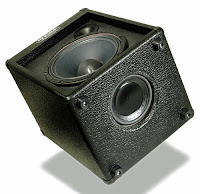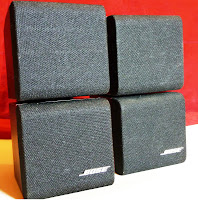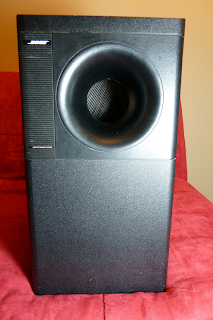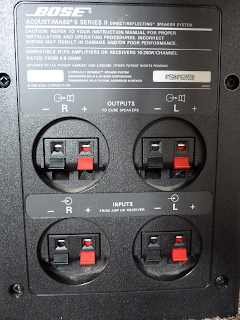What is a Stereo Speaker?
The Stereo Speaker is the most important piece of equipment found in a stereo system. Speakers convert electronic audio into a mechanical movement of the speaker cone. The movement of aur caused by the speaker is what you hear. The greater the movement, producing sharp clarity of sound and a wide range of frequencies, the better the speaker will be.
Speaker Types:
Speakers come in many sizes and shapes. Most average speaker enclosures have a large woofer, midrange and tweeter speakers. The lower priced shelf units might have one to three speakers, such as my old
DS-826 speakers.Others might have several tweeters, up to eight midrange speakers, or a separate large woofer. The speakers used for the high-frequency range (tweeter) are usually small metal, hard-coned or horn-type speakers. Midrange speakers vary from 3 to 6 inches, and woofers vary usually from 8 to 12 inches.
The best frequency response is from 20 to 20,000 Hz; most speakers ary from 37 to 20,000Hz. Very few men can hear above 15,000Hz or below 50 Hz, but some women can hear above 22,000Hz. Besides the frequency response, how a speaker sounds is significantly influenced by its speaker enclosure.
1. Acoustic Suspension:
 |
| AS speakers are completely sealed |
Speakers in an acoustic suspension (AS) enclosure are completely sealed without any extra openings. The AS enclosure offers easy listening to all types of music. A three-way acoustic suspension speaker system might have two or three speakers. Because it takes more power to move the air with AS speakers, they usually have a higher maximum power-handling capacity. The tweeter might be a 1 or 2 inch cone, dome, or ribbon-type speaker. The midrange speaker might consist of a 2 to 5 inch cone or dome-type speaker. A woofer speaker in the AS enclosure might be 6 to 10 inches in diameter. The frequency mightvary from 22 to 44 kHz, although many AS speaker frequency responces can go above 50 kHz.
2. Bass-Reflex
 |
| Bass-Reflex speakers have a visible porthole |
The bass-reflex speaker produces stronger and deeper bass frequencies. They are designed with a tuned porthole to allow the enclosure to resonate and produce low-frequency notes. Some bass-relex enclosures have up to three different sizes of portholes. Bass-reflex speakers can be driven harder and are designed for people who like high-power music.
The small bass-reflex enclosure might have two speakers with a bass-reflex porthole, and a 1 or 2 inch cone speaker supported with synthetic resin for eliminating distortion caused by edge resonance. You might find a 1 to 2 inch conce or dome speaker as tweeter, with a 2 to 6 inch midrange and an 8 to 12 inch speaker as woofer. For power-handling capacity, heat resistant voice coils and adjustable thermal-relay protection circuits are found for safety under high-power driving. A carefully tuned bass-reflex enclosure for producing tight and solid bass reproduction is found along with an antiresonating baffle board in some units.
The bass-reflex enclosure provides good reproduction for classical, jazz, easy listening, rock, and country music. The average frequency response varies from 35 to 20,000Hz. The bass-reflex speaker is capable of covering the entire musical range.
3. Passive Radiator
 |
| Note the smaller radiator of this PR speaker |
The passive radiator (PR) speaker enlcosure produces greater bass than any other type of speaker. The passive radiator enclosure has two separate woofer speakers, but one is a simple cone without any voice coil or signal applied to it. It has thus an active main driver and a passive radiator.
Actually, the passive-port cone acts as a variable port, increasing the bass frequency response. A two speaker PR enclosure might have a 1 inch dome and an 8 inch speaker with another 8 inch dud cone. The passive radiator is usually larger than the bass speaker. In some units, the woofer cone might be a special design with corrugations for wide-range response.
SEE VINTAGE SPEAKER REVIEWS HERE












